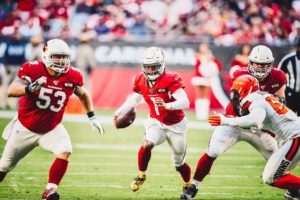In recent years, the world of sports has undergone a significant transformation, and it’s not just about athletes getting faster or stronger.
The game-changer is big data. Coaches, managers, and even players are leveraging analytics from basketball software to gain a competitive edge.
From predicting player performance to devising winning strategies, big data is redefining how sports are played and managed.
Let’s delve into how analytics is shaping competition strategies in the modern sports arena.
MORE NEWS: Experience AZ: 10 Arizona restaurants with an amazing view
The Rise of Big Data in Sports
Understanding Big Data
Big data refers to the vast volumes of information that can be analyzed computationally to reveal patterns, trends, and associations.
In sports, this data comes from various sources like player statistics, game footage, wearable technology, and even social media interactions.
The ability to process and interpret this information allows teams to make informed decisions that can significantly impact performance.
Historical Context
Traditionally, sports decisions were based on experience, intuition, and basic statistics.
However, the success stories of teams employing data analytics have inspired a revolution across all sports disciplines.
The famous “Moneyball” approach in baseball, where data was used to build a competitive team on a budget, showcased the potential of analytics.
This strategy has since been adopted in football, basketball, and other sports, highlighting the universal applicability of big data.
Impact on Player Performance
Personalized Training Programs
Coaches are now using data analytics to create personalized training regimens.
By analyzing an athlete’s performance metrics, strengths, and weaknesses, training can be tailored to enhance specific skills.
For instance, if data shows a basketball player has a lower shooting percentage from the left side of the court, targeted drills can be implemented to improve that area.
This not only boosts performance but also helps in injury prevention by monitoring physical stress levels.
Wearable Technology and Real-Time Data
Wearable devices track real-time data such as heart rate, speed, and fatigue levels. This information allows coaching staff to make immediate adjustments during training sessions or games. For example, if a football player’s fatigue levels are high, they might be substituted to prevent injury.
Websites like 7MSCORETHAI offer comprehensive live scores and stats, providing valuable data that can be used for real-time decision-making.
Strategic Game Planning
Opponent Analysis
Teams are using big data to analyze opponents’ strategies and tendencies.
By studying patterns in an opposing team’s play, coaches can develop game plans that exploit weaknesses and counter strengths.
For example, if data reveals that a soccer team concedes most of their goals from set-pieces, strategies can be devised to capitalize on that vulnerability.
This analytical approach enhances the chances of victory by being one step ahead of the competition.
In-Game Decision Making
Analytics isn’t just for pre-game preparation; it’s also influencing decisions during the game. Coaches use real-time data to make strategic calls, such as when to make substitutions or adjust formations.
For instance, if analytics indicate that a basketball team’s three-point shooting percentage drops significantly in the fourth quarter, a coach might focus on driving to the basket instead.
This adaptability can be the difference between winning and losing.
Recruitment and Talent Scouting
Data-Driven Scouting
Gone are the days when scouting was solely based on watching players in action. Scouts now use data analytics to evaluate potential recruits comprehensively.
Metrics like player efficiency ratings and advanced statistics provide a more objective assessment of talent.
This approach minimizes the risk of costly signings that don’t perform as expected, ensuring that teams invest wisely in their future.
Predictive Analytics
Teams are employing predictive models to forecast a player’s future performance. By analyzing historical data, teams can make informed decisions during drafts or transfer windows.
For example, if data shows a steady improvement in a young athlete’s performance metrics, they might be considered a good long-term investment.
This foresight can provide a significant competitive advantage in assembling a strong team.
Fan Engagement and Experience
Personalized Content
Big data isn’t just benefiting teams and players; it’s enhancing the fan experience as well.
Sports organizations analyze fan behavior to offer personalized content, such as tailored highlights or merchandise recommendations.
By understanding what fans are most interested in, teams can engage more effectively, strengthening fan loyalty and increasing revenue.
Interactive Websites
Apps and websites like THSPORT provide fans with real-time statistics and analytics, making the viewing experience more interactive.
Fans can delve into data just like the professionals, deepening their engagement with the sport.
Features like live polls, fantasy leagues, and augmented reality experiences are becoming increasingly popular, all powered by big data analytics.
Ethical Considerations
Data Privacy
With the increasing use of personal data, concerns about privacy have emerged. It’s crucial for sports organizations to handle data ethically, ensuring that players’ and fans’ information is protected.
Compliance with data protection regulations and transparent data policies are essential to maintain trust and avoid legal repercussions.
Fair Play
There are debates about whether extensive use of analytics gives some teams an unfair advantage.
Smaller teams with fewer resources may struggle to keep up, potentially widening the gap between elite and lower-tier teams.
Establishing regulations on data usage may become necessary to maintain competitive balance and ensure fair play across all levels.
Challenges in Implementing Big Data
Data Overload
One of the challenges teams face is sifting through the vast amounts of data to find actionable insights. Without proper analysis, big data can lead to information overload rather than strategic advantage.
Investing in skilled data analysts and effective software tools is crucial to turn raw data into meaningful strategies.
Cost and Resources
Implementing a comprehensive analytics program requires significant investment in technology and skilled personnel. Smaller teams or organizations may struggle to allocate the necessary funds, potentially putting them at a disadvantage.
Finding cost-effective solutions and prioritizing key areas can help mitigate this challenge.
The Future of Big Data in Sports
Advanced Technologies
Emerging technologies like artificial intelligence and machine learning are set to take sports analytics to the next level.
These tools can process complex datasets more efficiently, uncovering insights that were previously unattainable.
For example, machine learning algorithms can predict injury risks based on a multitude of factors, allowing for proactive measures.
Globalization of Analytics
As big data becomes more accessible, even grassroots and amateur teams can start leveraging analytics.
This democratization could elevate the overall standard of sports globally. Online platforms and open-source tools are making it easier for anyone to tap into the power of big data, fostering a new generation of data-savvy athletes and coaches.
Case Studies
Success Stories
Several teams across different sports have demonstrated the impact of big data. For instance, professional basketball teams use player tracking data to optimize shot selection, leading to more efficient scoring.
In soccer, clubs analyze player movement patterns to improve defensive strategies. These success stories highlight the tangible benefits of embracing analytics.
Lessons Learned
On the flip side, some teams have faced setbacks due to over-reliance on data without proper context. For example, focusing solely on statistics might overlook intangible factors like team chemistry or player morale.
Balancing analytics with traditional expertise and human intuition remains a critical lesson for all.
Conclusion
Big data is undeniably reshaping the landscape of sports competition strategies.
From enhancing player performance to enriching the fan experience, analytics offers a multitude of benefits.
However, it’s essential to navigate the challenges and ethical considerations carefully.
As technology continues to advance, the integration of big data in sports will only deepen, promising an exciting future for athletes, teams, and fans alike.
Whether you’re a coach looking to gain a competitive edge, a player aiming to improve performance, or a fan seeking a deeper connection with the sport, understanding the role of big data is becoming increasingly important.
Embracing this data-driven era opens up new possibilities and elevates the entire sporting experience.




